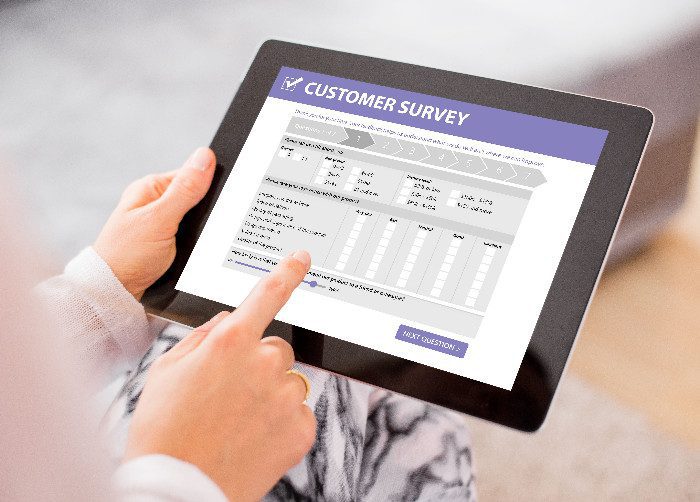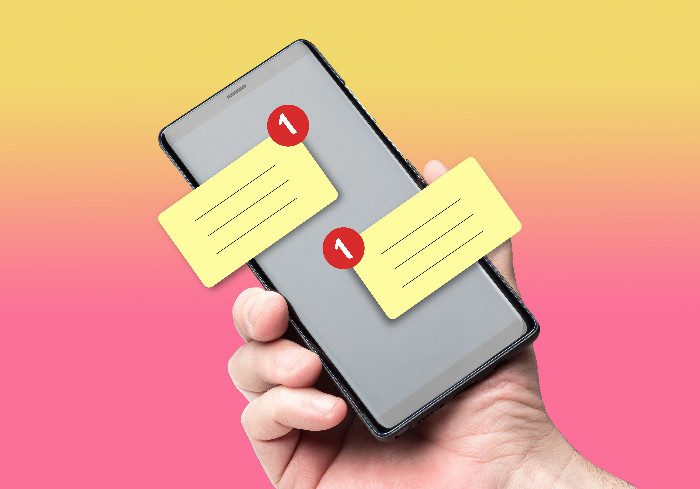Are you ready to give your mobile app the exposure it deserves? If so, we’ve got just the guide for you!
With over a decade in the mobile app industry, I have become well-versed in what marketing strategies are essential for success.
From keyword research to marketing automation software, I have uncovered all the secrets you need to know to get your app noticed.
Whether you’re just getting started with marketing or looking to refine your strategies, by following this ultimate guide for app marketing success, your app will be at the top of its game in no time. Let’s get started!
Mobile App Marketing Funnel
Marketing for your mobile app doesn’t end at launch. Success doesn’t happen overnight – it requires ongoing marketing throughout the entire life span of your app to stay relevant.
The marketing funnel for mobile apps breaks down into three phases: awareness, acquisition, and retention.
In the next section, we’ll dive deeper into each phase and explore strategies for creating effective marketing for mobile apps and ensuring success!
Awareness
The awareness phase of marketing for mobile apps is a crucial part of success.
Of course, you need to make your customers aware of your app early on, but it’s equally vital to enhance your awareness of the current market.
Having a good understanding of your target audience and current trends in mobile marketing will allow you to stand out from the competition and craft marketing strategies that convert curious browsers into loyal users.

Acquisition
The acquisition phase of marketing for mobile apps is critical to building a solid customer base and keeping consumers engaged.
This step takes in the pre-launch phase of your marketing campaign. It’s about capturing attention so users know about your excellent app and how it can help them meet their needs.
Retention
Getting users to download your mobile app is only part of the equation; the ongoing challenge is to keep users engaged and loyal.
The retention phase focuses on marketing activities encouraging users to continue using your app.
Mobile App Marketing Steps
Now that you know the phases of marketing for mobile apps, it’s time to go into even more detail and walk through the actionable steps necessary to achieve success.
Each phase requires a unique approach, but there are a few fundamentals you should strive for during each step of marketing your mobile app.
Whether planning the most effective marketing strategies or leveraging data insights, these steps will surely bring you the most success when marketing your mobile app.
Awareness
The pre-launch marketing stage of mobile app marketing is about building awareness and visibility for your brand, so having clear brand messaging and positioning is paramount for success.
This phase of marketing is all about establishing:
- who your app is aimed at
- what your app is all about
- where to use it
- how to use it
- and why it’s beneficial to customers
By crafting a marketing campaign that communicates these key points, you’ll be able to effectively target and engage the right customers.
Taking the time to personalize marketing efforts, accurate target audiences, and understanding ever-changing trends can help blaze the marketing trail for your product’s mobile app marketing.
Below are the seven steps for marketing mobile apps in the pre-launch stage.
Step 1: Research the Competition
Brand awareness and engagement are essential when marketing for mobile apps, but it all starts with pre-launch research.
It’s essential to understand the needs of your customers’ and general market drivers’ needs so you can find a gap in the market and fill it with your app.
Research factors such as:
- what other apps offer
- what they don’t offer
- what marketing techniques do they use
- and how they appeal to the customer base
The goal is to create something unique and different from what’s already out there.
Doing thorough research upfront will put you in a better position to ensure your marketing plan is successful.
Step 2: Conduct Customer Surveys
Gathering customer feedback is one of mobile applications’ most crucial marketing strategies.
Surveys are a great way to understand when your customers usually shop and use your application and acquire demographic information.

Here are some tips for conducting customer surveys:
- Keep interviews brief: Keep the survey to no more than 10 minutes.
- Assemble focus groups of 8-10 people: This will give you various opinions and insights.
- Use multiple survey channels: Offer surveys via email, social media, or on-site.
- Keep in contact with your focus group regularly: Check in with them periodically to keep your research up-to-date.
Customer surveys are an invaluable resource that you should make the most out of if marketing a mobile app!
Step 3: Create Customer Personas
A user persona is a semi-fictional version of your ideal customer.
Create your customer personas with traits of those likely to use the app in mind.
Such as:
- demographics
- interests
- values
- pain points
- design patterns they find attractive
- what marketing techniques they respond to best
- even which influencers will have the best impact
This knowledge allows you to build marketing campaigns that capture the attention of your target demographic in the most effective way possible.
Any mobile app marketing plan can become powerful and successful with customer personas.
Step 4: Pick a Launch Date
Choosing the correct launch date for marketing your mobile app can make or break your success.
When deciding on a launch date, you should plan far enough away to allow yourself plenty of time to course correct if something doesn’t go as expected.
- Launching too early can lead to underwhelming results
- launching too late may mean potential users are already engaging with competitors’ platforms
- launching at the same time as other significant events can take away from marketing your product
Take the time to choose the best possible date – it could be the difference between success and failure!
Step 5: Create a Website
Launching a website for your mobile app before it goes live is one of the best marketing strategies for any product or service.
Creating a pre-launch website
- gives you an early edge in marketing
- enables you to gather email addresses from potential users
- and helps keep users up-to-date on the progress of your product
Expanding your marketing capabilities with a pre-release website will be sure to pay off when you can generate awareness of your app and capture the enthusiasm of users eagerly awaiting its launch.
Step 6: Buildout Social Channels
Social media marketing for mobile apps is an area you don’t want to ignore!
From social media accounts that provide your target audience with a direct and laid-back way of connecting with you to content marketing on the latest developments, social channels give you the perfect opportunity to promote your app.
One tip?
- Set up an “Invite a friend” button on your app so users can share it with their friends quickly, entice them to boost word-of-mouth marketing by offering rewards for each friend who joins.
Maximize this marketing goldmine – social media should be one of your priority marketing channels! Make sure to include download links in every marketing post.
Step 7: Start Content Marketing Early
Getting your marketing strategy for mobile apps up and running early can reap many rewards.
Extensive content marketing can develop awareness and trust with your target audience before launch.
- Turn blog posts into marketing material for email campaigns and social media posts
- Use screenshots, videos, feature listings, and humorous commentaries for greater engagement.
- Capture attention with straightforward, concise content that isn’t overtly promotional but still fixes a common problem many people face with your app solution.
Whether you’re creating the content yourself or relying on the help of a professional like Enterprise mobile app developer, marketing your app with content marketing can keep you in touch with your target audience throughout the launch process.
Acquisition
Post-launch marketing for mobile apps is essential to your organic user acquisition success.
Acquiring and retaining users should be ongoing processes that need regular optimization and follow-up.
This is especially true during the first week of launch when it’s essential to drive as many downloads as possible to secure a higher ranking on app stores.
To achieve the best results in this area, let’s look at the six actionable steps you can take to get the most out of your acquisition efforts.
Step 1: App Store Optimization
App Store Optimization (ASO) is an essential marketing tool for mobile apps. If you want your app to stand out and become successful, ASO is key.
To create an effective ASO strategy, focus on two main pillars: discoverability and conversion.
- Discoverability means having the right keywords and phrases in place
- Conversion refers to optimizing visuals such as your icon, screenshots, and description
Each of these needs to spark the user’s interest if you want higher download rates!
With a smartly designed ASO approach in place, you can reach a wider audience and increase downloads.
Step 2: Paid Google Ads
After launching a mobile app, marketing can help you reach the right users and increase downloads – and paid Google ads are an effective way to do that.
- Setting up a campaign is simple, and you can start targeting users searching for related products within your budget.
- Once you’ve gotten familiar with basic marketing concepts such as keywords and audience bid strategies, you can start honing in on web searches for users who are likely to be interested in your product or service.
With the help of Google Ads, marketing for mobile apps after launch has never been easier.
Step 3: Paid Social Ads
So you’ve created a great marketing plan and launched your mobile app. Now it’s time to move on to step three – Paid Social Ads.
This step is extremely important in marketing post-launch, as it can help you get maximum reach, better-targeting options, and an improved audience base.
Not to mention that the results are often more specialized than almost any other marketing strategy.
Run ads on several platforms for diverse results. For example:
- Twitter concentrates on current trends and conversations.
- Instagram taps into powerful visual storytelling, allowing businesses to share personal relationships with their consumer base.
- TikTok allows users to explore and build memorable relationships through entertaining video content.
Make use of all these great platforms today and drive your business forward — don’t forget that paid ads are an important part of success!
Step 4: Focus on Organic Social
Post-launch, it’s important to focus on organic marketing because it’ll help you build relationships with users and maintain the loyalty of existing customers.
This can also lead to increased visibility for your product and help create a steady stream of downloads for your app.
There are many ways to do this, including:
- establishing a presence on multiple social platforms
- creating content that engages your target audience
- building relationships with influencers
- tracking and analyzing your performance
Organic marketing through social media is an essential part of any marketing strategy for mobile apps post-launch, so make sure to invest in it and get creative!
Step 5: Optimize Your Website
Your website is an important marketing tool for the mobile app’s post-launch. It’s where users can discover more about your app and read reviews from other customers.
Optimize your website so it’s easy to navigate and attractive enough to keep visitors interested.
This doesn’t have to be a complex process:
- focus on evaluating the user experience, resolving any technical issues,
- ensure every page of your site is optimized for SEO
- double-check that any marketing material, such as blog posts and videos, is correctly linked
Ultimately, optimizing your website after launching marketing efforts is essential if you want to maximize the reach of your product.

Step 6: Create a TON of Video
Mobile phones have become the preferred device to view content, and video marketing is one of the most effective ways to grab attention in these saturated digital stratospheres.
Short, relevant videos featuring your business will help you stand out from the competition and increase engagement with potential users.
There’s no lack of options when it comes to marketing for your mobile app post-launch:
- Comedic clips on TikTok
- Helpful how-to’s on youtube
- Personal, dynamic Reels on Instagram
These are just a few ways to market your mobile app successfully, so get creative and take advantage of this marketing opportunity!
Retention
When marketing for mobile apps, focusing on user retention is equally as important as user acquisition.
It doesn’t do any good to simply acquire new users and be done; you must keep them engaged with your app to turn them into loyal customers.
Let’s examine the five highly effective steps to engaging and maintaining customers.
Step 1: Great Customer Service
Customer service is the first and foremost step for marketing any mobile app successfully.
Great customer service can make potential customers loyal to your business, while a negative experience can turn off potential customers before they have even tried out your product.
- Investing in great customer service and actively responding to comments, feedback, or complaints is essential for marketing success in the competitive world of mobile apps.
- Always strive for quick responses so that users feel heard and respected.
Excellent customer experience will give you a tremendous advantage over your competitors.
Step 2: Overly Communicate
It’s essential to keep communication going when marketing a mobile app.
- Regularly update your users on what changes have been made and share engaging content related to the app.
- Stay consistent with your messaging and respond swiftly to any feedback or inquiries.
- To ensure maximum visibility, use multiple channels, such as email marketing, press releases, and social media marketing.
In addition to informing your users, you should also ask for their feedback and opinions.
This will make them feel valued and help you learn how you can improve your app.
Step 3: Push Notifications
There’s a thin line between helpful reminders and marketing overload, and sending the right push notifications at the right time can make all the difference.
- With thoughtful design and an understanding of why users use your app, managing effective push notifications allows instantaneous marketing.
- Plus, you have the added benefit of tracking performance to ensure that your marketing efforts reach their fullest potential.
Getting creative with push notifications doesn’t just allow you to market better–it takes advantage of user engagement and sets your business up for success.

Step 4: Chat Bots
Chatbots are quickly becoming marketing must-haves for mobile apps.F
These automated programs bring the human experience to customers, answering their questions quickly and providing helpful support.
Here are a couple of things to keep in mind when including a chatbot:
- Though chatbots are quick, effective, and efficient, there is a danger of creating an impersonal experience; review your bot’s phrasing regularly so it strikes a conversational tone that customers can relate to and appreciate.
- Be sure to maintain person-to-person communication with customers: remember, even if you have the perfect chatbot, it isn’t a substitute for real customer service.
Chatbots are excellent additions to marketing for mobile apps when used properly and with a human touch.
Step 5: Personalization
Personalization is a key marketing strategy for mobile apps, and it’s great because it enables customers to have a more tailored experience.
Personalizing your marketing campaigns allows you to:
- track user behavior
- provide custom content that users are interested in
- and understand which methods are most effective
- create a personal relationship between you and your users
You can personalize your app by offering tailored marketing campaigns with discounts and incentives based on the user’s interests or personal information, such as birthday texts or loyalty points.
By leveraging these strategies, you can personalize marketing for mobile apps and create an experience that customers love.
Conclusion
Marketing for mobile apps is a process that requires careful planning and thoughtful execution.
Beyond the basics of marketing, such as customer service, communication, push notifications, chatbots, and personalization, success also depends on understanding your app’s purpose and how it can best benefit users.
Investing in marketing for mobile apps will set your business up for success and ensure you reach your marketing goals.
Now I’d like to hear from you: what marketing strategies have worked best for your mobile app? Let me know in the comments below!

Frequently Asked Questions
The marketing strategies used for mobile apps include communication, push notifications, chatbots, and personalization. Additionally, customer service is a key marketing strategy as it allows businesses to build customer relationships and provide helpful feedback.
There are several marketing strategies for mobile apps, such as communication and customer service. Additionally, marketing your app through push notifications, chatbots, and personalization can help you reach more users and maximize visibility. Finally, utilizing traditional marketing channels like email marketing and press releases can also be beneficial.
The steps involved in marketing for mobile apps include customer service, communication, push notifications, chatbots, personalization, and utilizing traditional marketing channels. Additionally, understanding the purpose of your app and how it can benefit users is an important part of marketing success.
Mobile app marketing is digital marketing that focuses specifically on promoting mobile applications. This marketing strategy utilizes communication, push notifications, chatbots, personalization, and traditional marketing channels to reach users and maximize visibility. Additionally, customer service is important as it allows businesses to build customer relationships.
The 4 main marketing tools for mobile apps are: customer service, communication, push notifications, and chatbots. Personalization is a key marketing strategy to provide tailored customer experiences, and you should also utilize traditional marketing channels such as email marketing and press releases.



